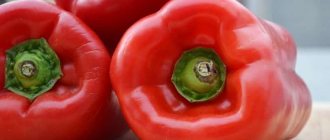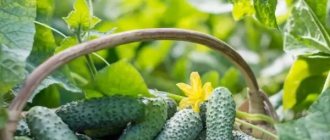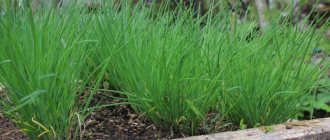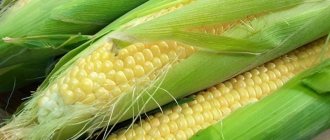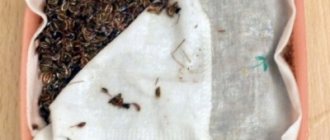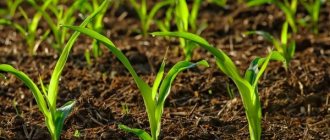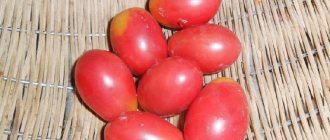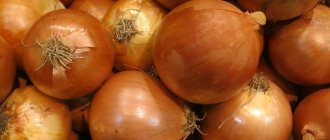The history of corn as an agricultural crop goes back about 9 thousand years. It has been actively used and is now used in cooking and medicine. It ranks second after wheat in terms of sales volume in the world among grain crops.
Corn is suitable for dietary nutrition - when consumed in moderation, it helps to get rid of excess weight by stimulating the cleansing of the digestive tract of toxins. Thanks to a large amount of antioxidants, cereal protects the skin from aging. Eating maize reduces the risk of developing diabetes and cardiovascular diseases. Planting a crop is simple, but it is worth considering the nuances of choosing a variety and preparing seeds. In this article we will tell you how to choose a variety and soak corn for planting, how to care for seedlings, and how to harvest and preserve the crop.
Variety selection and seed selection
There are a great many varieties of corn. The choice depends on the geographical location, weather conditions and purpose of application.
The best varieties and hybrids for obtaining a rich harvest on your personal plot: sweet variety Lakomka 121, Dobrynya, Spirit, Early Golden, Ice Nectar, Sundance, Pioneer, Syngenta, Jubilee.
In central Russia, where the summer is short, early corn is recommended : Early sweet, Trophy F1, Jubilee F1, Landmark F1, Ladozhsky 250 MV, Ladozhsky 191, Madonna. These varieties and hybrids give a good harvest within 2.5 months after planting.
Mid-season varieties include: Sweetstar F, Maxalia, Lingonnitsa, Favorite, Pearl, Delicacy, Rusalka, Spirit F1.
Late-ripening varieties are the most resistant to diseases: Polaris, Bashkirovets, Rossiyskaya bursting.
If you need corn for popcorn, choose special varieties: Pop-pop, Ping-Pong, Vulcan, Zeya Krasnaya, Gostinets, Vnuchkina Joy, Air. Please note that they are particularly high maintenance. They are suitable for popcorn because inside each kernel there is a drop of juice that breaks the shell when heated.
The best forage varieties: Zhemchug, Adevey, Saratov sugar medium-grown, Aurika, Golden Fleece, Kubansky, Viola.
For growing on the balcony, low-growing varieties are taken, for example, Skvirka, Delicatesnaya, Kulikovsky.
Seeds for sowing are selected in the fall. Choose large, evenly ripe cobs. Moreover, the plants from which the cobs are collected must also be tall, untouched by pests and diseases. The selected fruits are dried in the sun and stored in a dry, well-ventilated room until spring, calibrated by size.
Important ! Only one variety is grown on the site so that cross-pollination does not occur and the parental properties are not lost.
How do I soak seeds before sowing?
I don’t know if this question is relevant for you now. It's also interesting for me because I keep soaking the seeds.
Zucchini, pumpkins, and okra have already been soaked; cucumbers, corn, peas, and beans are waiting their turn.
At the beginning, the main question is whether it is necessary to soak the seeds before sowing.
Different seeds have different germination rates. It depends not only on the condition of the seeds, their shell, essential oils, but also on their preliminary preparation, which consists of several stages.
The first stage is soaking. And this is the most discussed issue.
Why do you need to soak the seeds?
The seeds of all vegetables planted in our beds react to soaking in the most positive way.
Germination increases by 100% for parsnips, beans, peas, and parsley.
50% in cucumber, watermelon, zucchini.
Tomatoes, eggplants and spinach, planted after soaking, sprout twice as fast.
How to soak seeds?
Summer residents usually use regular soaking with germination.
We place the seeds on a damp surface, cover them and place them in a dark, warm place with a temperature of 25 degrees.
And this is where the nuances come into play.
It is very important what surface to spread the seeds on.
Some people spread the seeds on a kitchen sponge and cover with the same.
Connect them tightly with an elastic band. Place in a bag and keep warm.
This method did not work out for me because I was unable to achieve uniform wetting of the seeds. The outermost ones dried out. For this reason, I abandoned the method of soaking in kitchen sponges.
I like to use black jersey rags. The emerging beaks of the seedlings are clearly visible against a dark background.
It is important to take into account that synthetic fabrics dry out quickly or water rolls off them, so it is better to use cotton ones.
I place them on the bottom of the box, lay the seeds on top and cover with the same dark cloth. I wet it with water. I close the box with a lid and put it in a warm place.
Maybe the plants think they are in black soil and therefore germinate quickly?
I tried using cotton pads. Also an excellent material, holds moisture and heat well. However, germination must be constantly monitored. Otherwise you will get this result.
In this case, I had no choice but to plant the hatched seed along with a cotton pad.
So far it does not interfere and the sprout appeared the next morning after planting.
So don’t forget to periodically open the box for ventilation and check the seeds so as not to miss the moment the white roots appear.
As soon as they appear, the plant is ready to be sown in the ground.
It's about soaking with sprouting.
We soak some seeds until they swell, that is, we simply soak them.
The time for this procedure is different for each culture. Carrots, nigella onions and peppers will not lose their germination even after 10 days of soaking, but radishes, radishes, and turnips lose their germination after a day, and legumes after two.
So I lost the okra seeds; after a day of soaking, they simply rotted.
After this unpleasant incident, I found a table for the duration of soaking the seeds until they were completely swollen and pecked once.
6 hours for beans and peas, 8 hours for nigella onions, 10-15 hours for pumpkin, cabbage, cucumbers, salads, 20-40 hours for beets, eggplants, tomatoes and peppers, 48 hours for celery, carrots, parsley , 2-3 days - dill.
What should I soak the seeds in?
In the water to cull the weak. In disinfectant solutions for disinfection. In stimulants for awakening.
Increasingly, before sowing, seeds are soaked using biologically active preparations. When soaking in aloe juice, golden mustache juice, hydrogen peroxide, zircon, I did not see any super results.
I am not a fan of pushing a plant to germinate prematurely. Natural forces must awaken on their own. And if you haven’t woken up, then why expect a good harvest?
Now I thought that if some treasured seed of a unique plant needs to be awakened, then it is worth stimulating it.
Seed preparation
Main rules for seed preparation:
- Before planting, they are calibrated by size, choosing only large, rich and bright colors.
- A week before sowing, maize cobs are left for 3-4 days to be heated in the sun - this helps speed up germination. To do this, the fruits are placed in a gauze bag.
- To prevent diseases, grains are treated with fungicides.
- Some gardeners practice seed hardening. Place the grains in a damp cloth bag and put them in the refrigerator for five days.
- Then they are soaked in a solution of potassium permanganate for 20 minutes to disinfect, washed, placed in a container and kept warm. When small roots appear, the grains are planted in the ground. Some summer residents do not wait until the grains hatch and, after soaking the seeds for a couple of hours, immediately after that they plant them in the ground.
How to soak corn for planting and grow a rich harvest from ready-made seeds
The history of corn as an agricultural crop goes back about 9 thousand years. It has been actively used and is now used in cooking and medicine. It ranks second after wheat in terms of sales volume in the world among grain crops.
Corn is suitable for dietary nutrition - when consumed in moderation, it helps to get rid of excess weight by stimulating the cleansing of the digestive tract of toxins. Thanks to a large amount of antioxidants, cereal protects the skin from aging. Eating maize reduces the risk of developing diabetes and cardiovascular diseases. Planting a crop is simple, but it is worth considering the nuances of choosing a variety and preparing seeds. In this article we will tell you how to choose a variety and soak corn for planting, how to care for seedlings, and how to harvest and preserve the crop.
Planting seeds for seedlings
If the region is characterized by a short, rainy summer, which does not allow harvesting the cobs on time, seedlings will help. The seedling method brings the harvest closer by a whole month.
When to sow? In central Russia, grains are sown for seedlings in late April - early May, approximately a month before planting in open ground. The further north the plot of land is, the later they begin to grow seedlings. Maize seedlings are planted in open ground around the beginning of June.
The soil is shed, the seeds are buried to a depth of 2-3 cm. The soil is moistened regularly as it dries. For the full development of plants, illumination with fluorescent lamps is used. As the seedlings begin to grow, they are fed with mineral complexes.
Important! Overgrown seedlings will not produce a good harvest.
The good thing about the seedling method is that, with the right approach, up to two harvests can be harvested from one plot per season.
Another rule: seeds cannot be germinated in a common box. It is better to sow them in peat tablets in special containers, divided into small sections. It is allowed to plant in ordinary disposable plastic cups or cut-off plastic bottles.
Precursors of corn at planting
An excellent soil for this plant will be black soil on which the following corn predecessors sprouted: after winter grains, legumes, cabbage, grain corn, potatoes, cucumbers, zucchini, pumpkin, tomatoes and squash.
After such crops, the soil must be cleaned in the autumn - remove weeds and tops, then dig deeper, feed with rotted manure - per 1 sq. m. 5 l. You can also add 15 g of ammonium nitrate, 30 g of superphosphate and 20 g of potassium sulfide per 1 sq. m. land plot. If you feed corn correctly throughout its growth, you will achieve a good harvest.
Planting grains in open ground
Maize loves sunny and open places. It is important to know the correct timing of planting grains. If there is a lack of heat, the sprouts will not be able to increase the required volume of green mass and form cobs.
Corn grows densely, but without interfering with each other. Correct calculation: 5-7 seeds per 1 square. m.
Deadlines
Cereal planting time: when the soil temperature warms up to +10°C. For the southern and central regions this is the end of April - beginning of May.
If, according to the weather forecast, the region is warming, corn can be planted in open ground earlier, after warming up the soil under the film.
Attention! In cold weather, the seed does not germinate for a long time, it accumulates moisture in the ground and often sprouts, having already become infected with fungal infections.
Soil preparation
The planting location is determined on the sunny side, well ventilated. Ideally, wheat, legumes, cucumbers or tomatoes grew there last season.
The land is being prepared for planting in the fall. They dig up the bed, fertilize it with manure and phosphorus-potassium fertilizers. Corn does not like acidic soils, so such soil is deoxidized with dolomite flour or lime.
In the spring, two weeks before planting, they dig it up again, removing all the weeds.
In the spring, they dig again to a shallower depth, remove weeds, and apply complex fertilizers. The work is carried out two weeks before planting the seeds.
Landing nuances
Plant corn seeds in rows. The distance between rows is 50-70 cm, between seeds - about 15-20 cm.
Advice! The packaging with seeds always describes the nuances of planting the variety. Follow these guidelines.
The depth of planting grain in heavy, loamy soils is 4-5 cm, in ordinary soil - 5-6 cm, in light and loose soil - 8 cm.
Important! Corn is not planted in single bunches. It is not capable of self-pollination; it is a cross-pollinated plant.
How to plant corn?
Before planting, it is necessary to loosen and fertilize the soil. It is ideal to follow a crop rotation in which there is a pumpkin before the corn at the planting site. The holes for planting germinated seeds should be up to 10 cm deep. The distance between shoots is usually 30-50 cm. Plant them in a square for better pollination. Provide the planting site with temporary protection from birds, for whom sprouted seeds are a favorite delicacy.
If for any reason you were unable to germinate corn or you want to obtain seed material with high germination and productivity characteristics, or you need fertilizers and preparations for pest protection, contact ]"KLM"[/anchor]. In our catalogs you will find everything you need to increase the yield of various cultivated plants. Go to the catalog and choose or contact the company’s specialists. Our managers with specialized education will tell you all the details about the products presented in the assortment.
Growing and care
Although corn is called the queen of fields, it is unpretentious in care and does not require much effort from the gardener. However, proper care will increase productivity and make the cobs sweeter. In addition, maize needs protection from diseases, like other plants in the garden.
Thinning of seedlings
If germination is good, if the plantings turn out to be too dense, it is worth thinning them out, leaving tall and green plants at a distance of 15-25 cm from each other.
When pulling out excess sprouts, act carefully and hold the soil so as not to damage neighboring plants.
Hilling up and removing weeds
Corn loves loose soil, so the soil is regularly loosened and weeds are removed every two weeks. Plants are hilled once or twice a season to prevent the heavy bush from falling.
Watering and fertilizing
Maize is watered regularly, ensuring soil moisture to a depth of 15 cm. The crop loves moisture and needs watering throughout the entire growth period.
You should not overwater: the roots should be in moist, not wet soil. If the leaves have acquired a gray-violet hue, stop watering.
The grains are fed using organic matter and mineral fertilizers and following the timing:
- for the first time - with manure, chicken droppings after the appearance of 3-4 leaves;
- again - ammonium nitrate, potassium-phosphorus fertilizer in liquid form after 2-3 weeks.
Protection from illnesses and diseases
Excess moisture leads to the rapid spread of fungal diseases. The most common problems:
- Helminthosporiosis. The leaves dry out and die, and spots in the shape of an ellipse or rectangle of orange-brown color form on them. A dark-colored coating appears between the grains on the cobs. Diseased plants are removed, the rest are treated with biological or chemical fungicides.
- Fusarium is a disease of cobs. Several pockets of fluffy white, pink or purple mycelium appear among the grains.
- Rust. Yellow spots similar to rust appear on the leaves. The disease develops quickly, the cobs do not have time to form.
- Dusty smut . Together, the fetus remains a sloppy lump of uncertain configuration. Infected from the soil. The pathogen persists in the ground for up to nine years.
- Blister smut. The entire stem of the plant is covered with swollen bubbles. At first they are slimy, then they dry out and reproduce with pollen.
- Stem rot. Another type of disease when the entire bush is affected. The leaves dry out, the roots rot and easily come out of the soil. As a result, the bushes fall to the ground.
Fighting methods
Helps to avoid diseases:
- the right choice of varieties and hybrids that are resistant to fungal diseases;
- deep digging of the earth;
- soil preparation in the fall, treatment with fungicides;
- dressing grains with antifungal drugs;
- compliance with sowing dates, regular weeding and thinning;
- proper watering, constant loosening, weed removal;
- preventive spraying of plantings with fungicides.
Deadlines for planting
Video: Do I need to soak radish seeds before planting?
Important! The grains are soaked before planting. Then, when the frosts end, about a month after planting the grains, planting work can be carried out in the prepared soil. In order for the plant to take root in a new place, you need to slightly moisten the pot with seedlings and pull out the seedling with a lump of earth containing the substrate.
Caring for corn is simple: farmers just need to regularly loosen the soil and carry out weeding. Similar manipulations are carried out until the roots and sprouts become stronger. Every day or every other day you need to hill up the plant. To do this, the stems are sprinkled with earth. Hilling allows:
- retain moisture;
- retain nutrients after rains;
- activate active root growth;
- improve air flow;
- prevent the appearance of diseases and grass.
Drip irrigation at the dacha
Harvesting
Corn is harvested when the grains in the upper cobs of the main stalks are fully ripened, when the wrappers turn white, the hairs on top of the cobs turn brown, and the grains harden and become shiny and light yellow in color.
Maize is stored frozen or dried. Freshly picked cobs can be stored in the refrigerator for up to two weeks. Freeze grains or whole cobs after scalding them. They do not lose their properties for six months.
If the fruits are collected for seeds, you should wait until the hairs on top of the cob become completely dry and brown. This means that excess moisture has left them. Such grains will become excellent seed material.
Popular varieties of corn
The most popular type of corn is sweet corn, which has many good varieties. Our gardeners like to plant these early and mid-season hybrids:
- Spirit;
- Syngenta;
- Ice nectar;
- Dobrynya;
- Gourmand;
- Sundance;
- Pioneer;
- Jubilee;
- Early golden.
These varieties are distinguished by large grains, a pleasant sweet taste, they can be dried, frozen and even canned. Boiled cobs are also very sweet and tasty - the taste of this corn will take you back to your childhood.
Advice from experienced summer residents
Pre-sowing treatment of grains helps to increase immunity and rid seeds of pathogens. If you plan to plant your own material, pay attention to the following tips:
- Even at the grain selection stage, large, full-bodied grains without flaws in the form of black spots, stripes, etc. are selected. Most diseases are transmitted through seeds and only 10% through soil.
- Be sure to carry out disinfection, for example, in a 1% solution of potassium permanganate. The liquid does not penetrate inside and does not spoil the seed, but kills infections on the surface. Corn grains are soaked in the solution for 45 minutes. To obtain a 1% mixture, dilute 1 tsp in three glasses of water. potassium permanganate without top.
- Soak the seeds in clean water. To do this, fill a 1.5 liter bottle with water and wait until it is half frozen in the freezer, leave the ice, and pour out the rest. Soak the seeds with water obtained from melted ice. Such water has the ability to quickly penetrate inside the seed, accelerating germination. Some people add Epin, potassium humate, Zircon or aloe juice. But it is advised to refrain from adding ash or fertilizers.
- Corn grows in groups, so the grains are not planted individually.
- You should not plant different varieties next to each other: they will be pollinated and lose their varietal characteristics.
- If the maize seeds are irregularly shaped and shriveled, they are most likely sweet corn. They germinate less well and need more abundant watering.
- Popcorn varieties are planted on the sunny side; even partial shading will prevent the cobs from ripening during the summer.
- To determine whether the cobs are ready for harvesting, press on the ripe grain: if milky juice appears, harvest, if there is a clear liquid, wait.
Procedure for soaking corn
This procedure consists of three stages:
- Selection of seed material. Before soaking, you need to identify the best seeds that are most likely to germinate. Inspect the seed material for damage; the grains may have cracks or gouges. After visual selection, take a container with cold water, place the selected seeds in it, and leave them for 5-10 minutes. Poor quality grains will float, remove them from the container and drain the water.
- Preparing for soaking. Take a piece of fabric made from natural materials that allows water to pass through well; the material should be dense enough so that the roots and sprouts that appear do not cling to the holes in it. Fold a piece of fabric in several layers and place it in a container. Sprinkle the selected seeds on it.
- Soak. Gradually fill the seeds with water prepared in advance. It is ideal to use a spray bottle: spray water onto the seeds. You can pour it along the edge of the fabric until the water covers the seed by half.
When soaking, remember to leave space between the seeds. This is important, since the hatched roots can adhere to each other, and it is impossible to separate them without damaging the emerging root system. Also, do not allow the seeds to be completely submerged under water. Corn grains need access to air to develop roots.
The soaked seed material must be placed in a bright, warm place; a window sill is ideal, not on the sunny side of the house.
Eating and storage
After germination, wheat is suitable for eating for about 2 days. Therefore, there is no need to stock up on it for future use. For one person, it is enough to prepare 4-5 tablespoons of cereals. The grains will swell, and the norm will be enough for 2 days (3 tablespoons per day). Sprouts are stored only in the refrigerator, in a closed container.
It is correct to consume sprouted wheat in its raw form, chewing thoroughly and drinking it if necessary.
Many people add sprouts to various dishes:
- vegetable and fruit cocktails;
- porridge;
- salads;
- soups.
It is very useful to combine sprouted grains with legumes:
- chickpeas,
- lentils,
- we wave.
Together they have a beneficial effect on the digestive system and are easier to digest. To improve the taste, sprouts are often mixed with honey, chopped dried fruits, and nuts. They are added to bread and pastries, in which they somewhat lose their benefits.
The only thing you should not eat sprouted wheat grains with is milk. Mixing these two products is fraught with indigestion, flatulence, and increased gas formation.
Sprouting wheat for food is one of the most affordable ways to diversify your diet and feed the body with useful substances. Cereals sprout quickly. You need to eat them daily, 1–3 tablespoons per day. Positive properties do not appear immediately. A noticeable improvement in well-being usually occurs on the 14th–21st day of regular use of the sprouts.
Planting a crop
Compliance with agrotechnical rules helps to get a good harvest and protects corn from diseases and pests. Recommended sowing rates are determined by the interests of the plant, providing adequate nutrition and comfortable living conditions.
Deadlines
For corn, it is especially important to comply with planting dates; it does not develop well with a lack or excess of heat. The soil temperature should not be less than 10 °. At low temperatures, the seed lies in the soil for a long time, swells without sprouting, and often becomes infected with fungal infections.
The timing of sowing depends on the climatic characteristics of the region and weather conditions. If sharp warming is predicted, you can plant corn earlier by warming the soil with film, since at a temperature of 30 ° the growing season slows down significantly. For different regions, sowing dates are late April-early May.
In the northern regions, corn is planted as seedlings. Seeds should be planted at home in early May in order to be transferred to the ground in early June.
We calculate the rate and density of corn sowing per 1 ha
The rate of seed sowing depends on the variety of corn, the direction of use of the crop, soil, and weather conditions. The average figure is 50-70 thousand seeds per hectare of plantings. Converted per hundred square meters, it turns out to be 500-700 seeds, per square meter - 5-7 plants.
15-25 kilograms of seeds are planted per hectare. In the fields, 15-20 pieces are sown per 3 linear meters; the same standards should be followed when sowing in dachas.
At what row spacing and depth to sow corn?
Corn is planted in rows, with a distance of 60-70 centimeters, between neighbors in a row - 20-25 centimeters. When planting, you need to use the recommendations on the seeds, since different varieties require certain conditions.
The planting depth is 5-6 centimeters; when planting in heavy loamy soils, 4-5 centimeters is enough. The most sugary hybrids can be planted 1-2 centimeters smaller, following the manufacturer’s advice.
Tip: on very light loose soils, corn can be buried up to 8 centimeters.
How to treat corn seeds?
At seed factories, dressing is carried out. In this case, a corn protectant is used based on such active ingredients as carboxin + thiram, fludoxonil + metaloxyl. Seed treatment is carried out either by moistening or with an aqueous suspension of preparations at the rate of 5-8 liters of water per ton of seeds.
Interesting materials:
How to transfer all passwords from Opera to Chrome? How to transfer bookmarks and passwords from Google Chrome to Yandex browser? How to share wifi password? How to get a login and password on the government services website? How to change the name and password for wi fi? How to change Rostelecom login and password? How to change the access password to Wi-Fi TP Link? How to change the Wi-Fi password and name? How to change Keenetic password? How to change the byfly modem password?
When is the best time to plant corn?
The grains of this crop sprout even if the ground temperature is not lower than +10 ºС. When cool weather develops, the young crop stops developing. Late frosts not only reduce and deteriorate the corn yield, but also lead to the destruction of the plant itself.
Depending on the climatic conditions, there are favorable planting dates:
- In the south of Russia, planting is carried out at the end of April or beginning of May. The air temperature outside should settle above 5 ºС.
- For the middle zone, planting dates are 2-3 weeks, i.e. at the end of May.
- In Siberia and the Urals, the climate is correspondingly colder and makes it difficult to obtain fully ripened cobs. Harvests are harvested at the stage of milky-wax ripeness. Planting of seeds is carried out at the end of May or beginning of June.
Preparing water for soaking
There are several recipes for soaking corn seeds , the most effective are:
- Melt water. Preparation is quite simple; you will need a large container and regular tap water. It is advisable to pass the water through a home filter before freezing. Next, place the container of water in the refrigerator and wait until it freezes completely. Then, take out the container and place it in a warm place, watching until approximately half of the total volume has melted. You won't need the remaining ice; you can throw it away; the resulting melt water is what you'll need for soaking. Bring it to room temperature before placing the seeds in it.
- Water with honey. Honey is a storehouse of useful substances that can also be used by seed material. The preparation is simple - purify the water and dilute honey in it at the rate of one spoon per glass of water.
- Water with aloe juice. The composition of the soaking liquid is approximately 1 to 1.
You don’t need to soak the seeds for long, about half a day, while making sure that the volume of water in the container does not drop and replenish its supply. Sow seeds immediately after germination.
Care after planting so as not to be afraid of frost
Many people consider corn to be an unpretentious plant that only requires weeding. However, it is not. To get a good harvest and cobs with excellent taste, you will have to follow simple care rules.
Watering
Corn loves moisture and can absorb up to 4 liters per day. But this does not mean that the bed needs to be flooded. Overmoistening slows down the development of the root system and changes the color of the leaves (a purple tint appears). These factors jeopardize crop yield, so irrigation should be carried out taking into account the degree of soil moisture. The optimal soil index is 70-80%. When irrigating, 1-2 liters of water are consumed per bush. If it is not possible to carry out regular watering, it is recommended to periodically loosen the soil. This procedure is popularly called dry irrigation. Loosening essentially prevents the soil from drying out. But the best way to maintain moisture in the beds is to use a spot irrigation system. Water consumption rates at each stage of plant development are different. After planting the seedlings, moderate watering will be required; after the formation of 7 leaves, the amount of liquid increases to 1.5 liters per bush. Once the fibers on the cobs begin to darken, irrigate less frequently or reduce the amount of water used.
Loosening row spacing
Weeding, loosening
Weeding prevents the thickening of the beds, which attracts pests, and creates favorable conditions for the development of diseases. Therefore, sprouted weeds are periodically removed from the site. It is rational to combine this procedure with loosening the soil and hilling. This increases the breathability of the soil, allowing oxygen to nourish the deeper layers. With this care, the root system develops better and the plant’s immunity is strengthened. When the stem part is formed, the corn becomes more stable, which allows it to withstand gusty winds and heavy rainfall.
Top dressing
In addition to fertilizing the soil, at the stage of preparing the beds, it is necessary to fertilize the plants. This is due to the increase in green mass throughout the growing season. Complementary feeding is introduced in several stages, and strictly defined nutrients are used for each of them . The first feeding consists of slurry or a solution of bird droppings, applied after the formation of the 4th leaf on the shoot. After 2-3 weeks, a second fertilizing is introduced, consisting of 20 g of ammonium nitrate, 20 g of potassium salt, 40 g of superphosphate per 1 m2. After the appearance of 7-8 leaves, the plant needs replenishment with zinc, boron, copper and manganese.
Corn feeding
When using fertilizers, you should not increase the application rate. An excess of minerals is just as dangerous for shoots as their deficiency.
Corn agricultural technology is simple. One of the main issues requiring attention is the temperature regime, the observance of which creates favorable conditions for plant growth.
It is no secret that you can buy any fruits and vegetables on store shelves and in open markets all year round. Meanwhile, many amateur gardeners and gardeners prefer to grow some vegetables themselves. It’s not for nothing that many people prefer berries from their gardens, then you know exactly what you fed and in what conditions you grew this plant.
The birthplace of corn is America; Columbus brought it to Europe at the end of the 15th century, after he discovered this continent.
Before planting, we need to decide exactly how we will grow this plant - the queen of the fields. It received its outlandish name thanks to Nikita Sergeevich Khrushchev.
In 1959, having flown to America, he was so shocked by this cereal that he ordered the cultivation of corn throughout the former territory of the Soviet Union, which is not surprising given the nutritional value and usefulness of not only the grains, but also the leaves, stems, and cobs that were successfully used in the household.
How much do you and I know about the beneficial properties of corn? After all, we are all accustomed to the fact that this is a tasty, aromatic and simply appetizing cereal. Corn grains contain many useful and healing substances, as well as vitamins PP, E, D, K, B vitamins (B1, B2), salts of phosphorus, potassium, magnesium, and iron. Scientists have also proven the presence of such valuable microelements as tryptophan and lysine.
Is corn grown by seedlings?
It is customary to sow maize grains directly into open ground. But there is an alternative option - growing corn from seedlings. This method of cultivation is less known, but more preferable, as it has the following advantages:
- seed consumption is reduced;
- the time until the first harvest is obtained is reduced;
- harm from insects that destroy grains before germination in the soil is minimized;
- the risk of plant death from frost or excessive rain is reduced.
How to choose: variety or hybrid?
Hybrids of any crops are traditionally more productive, tasty and juicy, and better resistant to diseases and pests. Summer residents who are not going to get their own seeds can safely choose more resistant and hardy corn hybrids.
Many gardeners are engaged in obtaining their own seed material. This does not require special knowledge; you just need to wait until the standing cobs are fully ripened. It is important that only one variety grows on the site so that cross-pollination does not occur and the parental properties are not lost.
Types of corn ripeness
Typically, ripe corn has two types of ripeness:
- milky white, when the grains are soft even when raw, ripens at the end of July;
- when the grains are deep yellow and the cob is almost ripe, this is usually the month of August–September.
Milky-ripe corn is very tasty and is loved by children, as well as most adults. By including corn dishes in your daily diet, you will save yourself from diseases such as diabetes, heart attack, problems with the gastrointestinal tract and simply increase your immunity . Therefore, do not give up growing this crop.
Ripe corn has brown threads and dried outer leaves. After the grains are completely ripe, the cobs are broken off from the stems. In order to save corn as seed for the next planting, it is necessary to separate the diseased ears and allow the good ones to dry in the sun or in a well-ventilated area. You can store such corn in bundles in a suspended state.
The delicate and rich taste of sweet cobs, densely packed with juicy grains, yellow, like little suns, is loved by everyone since childhood. But growing corn on a personal plot seems to many gardeners to be a thankless task. In order to collect a generous harvest from its bushes that has reached technical ripeness, you will have to work hard, and first of all, gain the necessary knowledge about the agricultural technology of the crop.
Preparatory work
To get seedlings, you need to germinate them correctly. This method works if weather conditions prevented the landing. Do I need to soak sweet corn seeds? For a home soaking session, the seed material is immersed in water or an antibacterial solution before being thrown into the holes.
You can take a piece of gauze, soak it in warm water, squeeze it out and lay out the corn kernels. This fabric will allow the seeds to receive air.
Important! If you use another fabric, you need to open a piece to allow the grains to breathe.
